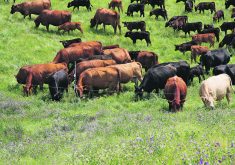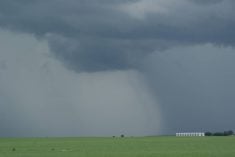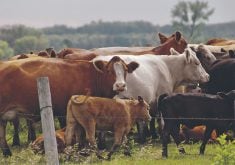No to WTO
For almost two decades, the Canadian Agri-Food Trade Alliance and some grain companies have been saying we need to sign onto the World Trade Organization.
Canadian politicians have been saying we need to get the Americans and Europeans to lower their subsidies to their farmers and some people are saying we need the WTO so famine can be alleviated in the world.
If one analyzes these statements, one quickly wonders about any real benefits from the WTO.
The benefits for a WTO trade deal are not clear. Yes, more trade may occur between countries but there is no guarantee that producers of the products would benefit. The main beneficiaries would be the traders, as they work on a margin, thus the transnationals would benefit.
Read Also

Farmer ownership cannot be seen as a guarantee for success
It’s a powerful movement when people band together to form co-ops and credit unions, but member ownership is no guarantee of success.
As producers, we would compete against all producers in the world, with the products being moved being the ones sold for the lowest price. Thus, one would not expect any increase in prices for producers. It is also interesting to note the people supporting the WTO are largely the same people who said the loss of the Crow (Benefit) would benefit producers.
The Americans and Europeans have not been lowering their subsidies to their producers. Canada, however, has dropped its single largest one item subsidy, the Crow Benefit.
In addition, if one speaks to European or American farmers, they do not indicate they are making huge profits. … They are also feeling the economic pressure.
With that in mind, does anyone believe the American or European governments will reduce their funding/livelihood to these groups and await their backlash? Remember, they are not laid back Canadian farmers.
If one considers the motives of the R-CALF group in the States, in relation to Canada exporting cattle to the States, one would even wonder if free trade is wanted.
As for the WTO agreement feeding the people with famine in the world, this could only occur if the poorest people of the world were ensured better prices for their products and that they would actually receive them. This is not in the WTO text.
This argument is similar to the one that the Roundup Ready canola people presented when it was introduced and I do not think there are any fewer people suffering from famine now than before its introduction.
A WTO agreement will not benefit Canadian producers in terms of their net income. To solve this economic crisis for producers, issues such as market power and cost of production must be solved first.
Canadian politicians need to focus on Canadian solutions and not continually hope other countries will reduce subsidy levels.
– Kyle Korneychuk,
Pelly, Sask.
BSE causes
Recent remarks by (the) Canadian Food Inspection Agency, as well as Dr. Chris Clark of the University of Saskatchewan, demanded a response.
Although feed may be related to transmission of BSE, there is no proof the PrPsc prion protein is infectious.
Something was spread in the feed which contained meat and bone meal, and it was very likely metals like lead, uranium and manganese.
The statement by Clark, that all prior BSE cases were “the same when analyzed in the laboratory” (WP, June 22) is false. It is documented that approximately 25 percent of the BSE cases diagnosed in the U.K. did not exhibit spongiform changes in the brain tissue. The U.S.’s two cases of atypical BSE are not really unusual.
The statement (that) “researchers have proven the epidemic spread throughout Britain and the rest of the world through feed containing meat and bone meal from BSE-infected cattle” is splitting hairs.
That something which was spread in the feed could just as likely have been heavy metals, radioactive particles and chemical residues from organophosphates.
Nobody thinks twice about such warnings as “tuna has high levels of mercury” or “lead accumulates in your bones,” so why doesn’t this equate into acknowledgement of the bioaccumulation of these metals and particles in the bones and brains of cattle and people?
Animal-derived apatite (crushed bones from cows) is used to sequester heavy metals like uranium and strontium and it is used for remedial decontamination of sites polluted with heavy metals. In life and death, the calcium/phosphorus matrix of bone accumulate heavy metals.
While some researchers and groups try to maintain the “infectious hypothesis,” many others have moved on to more specific toxicology studies and characterizing the prion protein. …
As for the implied “new strain” of BSE in the U.S. and the implied connection, or lack thereof, to sporadic CJD, this is defamation against the cattle industry with no evidence of any relationship.
Continued slander such as this should be met with lawsuits, as should the assumed causal relationship between BSE and vCJD. They are only similar diseases and no causal evidence exists.
Diseases occur because of contamination or invasion of our body, and our body’s subsequent inability to appropriately deal with the exposure.
Proper nutrition, including balanced vitamins and minerals, provide the building blocks to our immune system. An imbalance in these can harm our immune system.
As far as I am concerned, there is no incubation of any infectious organism involved with TSEs. They are diseases associated with exposure to toxic metals or particles, including toxic nanoparticles, which eventually overwhelm our body’s defence mechanisms. …
– Kathy Czar,
Hanna, Alta.
More to lose
In regards to Joyce Neufeld’s letter (Open Forum, March 23) “Lots to lose,” we have much more to lose than she lists if we change the wheat board into a dual market rather than get rid of it.
Under the free trade agreement Joyce says under Chapter II would make our government or farmers pay companies billions in compensation for lost profits present and future if we were to re-enact the wheat board actually proves the opposition to the monopoly of the wheat board is about taking profits from the farmers’ pockets and it proves the wheat board benefits farmers as a whole.
If we lose the monopolistic seller of our grain through a dual market and when farmers decide to sell only to the wheat board pool, these corporations will then be able to demand compensation for loss of profits and the payment that usually goes to the farmers as a wheat board final payment may have to be turned over to the multinationals for compensation for lost profits…
I may be wrong but I don’t think the corporations will stand aside and let farmers profit by going back to the wheat board once changes are made.
Think about it before you smuggle your next load of grain to the United States. It may end up being your only choice in the future. Also think about where the extra money you get by hauling to the U.S. comes from as no one will give you more than the world price for your grain. …
Any grain hauled into the U.S. can qualify for the corporation that imports your grain – a $4 US per bushel payment if they export that grain.
The grain you haul qualifies for an Export Enhancement Program U.S. taxpayer subsidy if it is exported in competition with the Canadian Wheat Board. …
One must think when hauling grain across the border that maybe it could be enhancing the lowering of prices on average over time. It may not be the wheat board’s fault after all that it can’t get premium prices all the time.
These corporations in the past have made no bones about it. They want the EEP subsidy to be maintained for the purpose of competing against and destroying the wheat board. We must be careful what we wish for. It may be our downfall in the end.
– R. E. Kennedy,
Simpson, Sask.
CAIS problems
I am corresponding with you to express my deep frustration with the 2005 Canadian Agricultural Income Stabilization program.
The new 2005 harmonized forms are simply not working. Farmers and their accountants have worked diligently with the new electronic filing system and have submitted the proper information to Canada Revenue Agency. Correspondence from CAIS administration on May 11 indicated an issue with the electronic filing , not all information is being transferred correctly. Subsequently farmers and their accountants have had to resubmit paper copies of sections 1 to 9 to CRA. Correspondence from CAIS administration on June 26 indicates yet another brand new problem. …
Why is there a delay? Why is it taking this length of time to have this information transferred? …
I do believe, as do many other farmers and accountants, that this new system has not simplified the application process. It has increased the cost for farmers to have their accountants resubmit paper copies and now we are still waiting to have the application even considered for processing. Producers have complied and done their part and has the government?
Producers are facing potentially the most serious economic set-back in decades. Farm families are struggling every day to maintain a viable industry and new improved programs like 2005 CAIS are only adding to the dismay and frustration with government programs.
I am asking my Member of Parliament, Hon. Carol Skelton, to intervene and have her government take responsibility for these errors and delays in the 2005 CAIS program.
– Darleen Warren,
Asquith, Sask.














